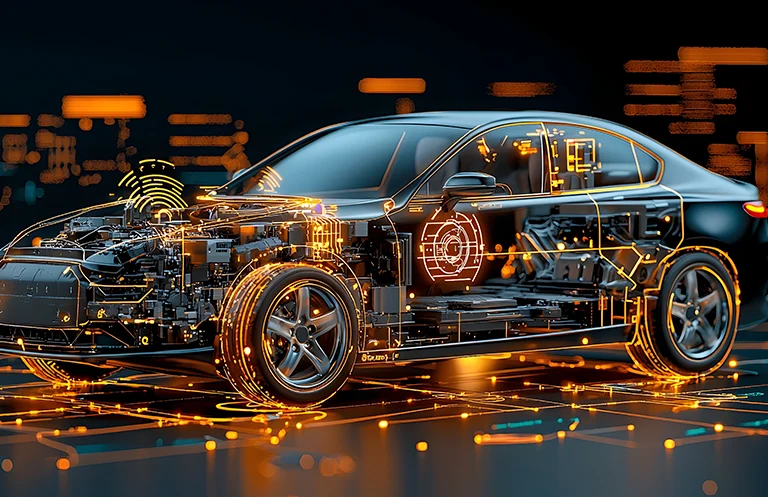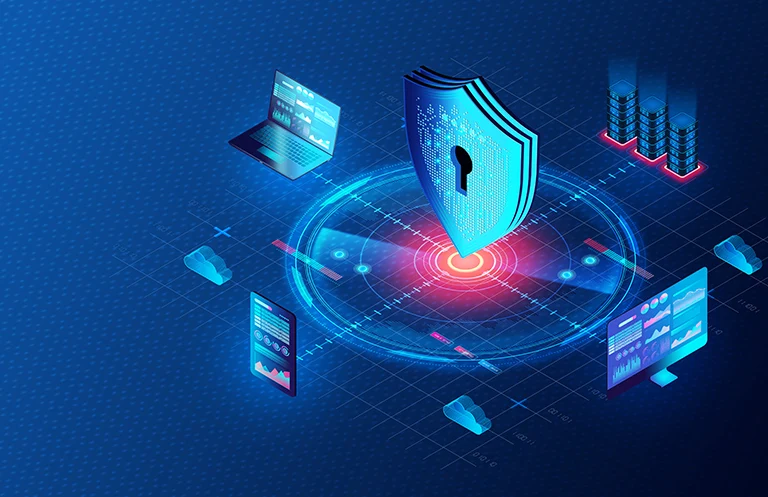Vehicles have evolved rapidly from being mechanical machines to smart connected machines that define luxury, safety, and comfort. We now see various complex systems in a car that are driven by software pieces. However, we know that software and firmware pieces may have to be updated from time to time. They also require bug fixes and security fixes and new iterations have to be released in the market to ensure a smooth driving experience. Once the vehicle is out in the real world, software and firmware updates may become difficult to implement.
This poses a real challenge for creating a seamless driving experience as most car owners do not want to drive back to the service station every time they need to update the software.
The Need for Over the Air Updates
To have a superior driving experience and reliability, it is important to keep the software and firmware pieces up to date. When you have to go to the service station to update the software, it not only increases cost, it also becomes a time consuming and tedious affair. You need a solution that minimizes dependency, reduces the high cost, and can be wirelessly incorporated. This is exactly what OTA updates can do for regular as well as autonomous cars.
We see OTA updates already implemented on our mobile and other smart devices, however, OTA updates in automotive can be very different. In a vehicle, the firmware or software piece can be updated wirelessly using a cellular network, through a gateway (OTA Manager) inside the car, and passed onto the respective ECUs, which is present in all modern vehicles.
If these updates are not carried out in a timely fashion, it can lead to various hazardous situations. It can lead to serious security issues, where anyone attacking the system can get a hold of the functions in your car and manipulate it, as they want. The attackers will be able to turn on or off the engine, gain control of the steering system, navigation, or even the infotainment system. However, if OTA updates are implemented, vehicles can be kept up to date at all times.
In short, OTA updates can be implemented for the following:
- Software Updates
- Data Collection
- Live Diagnostics
Let’s try to understand the components that are essential for OTA updates in a car.
Implementing OTA Updates (Components Required)
One of the most important things here is to implement OTA securely at the same time diagnose any problems or issues in the car. Challenging as it may sound, there are various strategies employed to implement it. However, to implement OTA updates, you need to have three major components. Let us discuss them in brief.
Open source backend server: One of the primary components that are required is a backend server (which can be open source). The server creates the firmware and software images that need to be deployed into the vehicle. It also collects the images that need to be deployed from the different tier-1 suppliers and combines all of them into one unified image to be further pushed to the ECU. Most automotive companies use open source or third party support architecture.
Secure communication: The second important component is the communication channel. The communication channel also needs to be secure; otherwise, it may lead to many security challenges as the information could be compromised. Automotive companies make use of various techniques and third party security solutions to secure the communication channel. These updates have to be sent to the head unit. One of the most popularly used software/firmware update systems is Uptane. It is an open and secure software update system design, which protects the update delivered over-the-air to the head unit of automobiles.
Head Unit/OTA Manager: Connected cars normally have multiple ECUs. The Head unit is made up of a cluster of ECUs. When an OTA update is initiated, it involves every component of the car and the respective ECUs need to facilitate the update. The head unit also can send a request for an update to the backend server.
It contains a table of every ECU within the vehicle including the serial numbers, software, and firmware version numbers. This allows the OTA Manager to verify the software/firmware updates that are available, and ensure that they are authorized for usage. If the ECU being updated does not have security functionality then the OTA manager would also be responsible for decrypting and authenticating the incoming update.
OTA updates are now being implemented seamlessly in many cars. This is not only true for autonomous but also regular cars that are part of the connected ecosystem. It minimizes downtime and ensures all mission critical functions are operating well without encountering any errors. eInfochips leverages its expertise across ADAS, Infotainment systems, Telematics, Connected Vehicles (V2V, V2X), EV Charging, and Multimedia Sub-systems to help global OEMs and Tier-1 companies deliver a superior experience, safety & efficiency.
While the concept of remotely updating a car’s software and firmware holds immense potential, it also presents unique challenges Now, lets focus on some of the distinctive and forward-looking trends in OTA automotive updates that are redefining the future of the automotive industry.
- Quantum-Secure Encryption: The world of OTA updates is on the brink of a quantum leap in security. To safeguard updates from quantum-based threats, the automotive industry is exploring quantum-secure encryption, leveraging the unpredictability of quantum particles to fortify the security of data transmission and reception.
- Holographic User Experience: Creating a seamless user experience during OTA updates is becoming an art form. Automakers are venturing into the realm of holographic interfaces, offering drivers an immersive, hands-free, and futuristic interaction with the update process. The user experience is transitioning from ‘user-friendly’ to ‘user-enchanting.’
- Self-Replicating OTA Bots: In the world of OTA updates, smart, self-replicating bots are taking center stage. These bots autonomously manage the update process, ensuring that each vehicle is updated efficiently and accurately, while continuously learning and adapting to enhance future update performance.
- Cosmic Connection Redundancy: With the growing popularity of OTA updates, vehicles are venturing into areas with less than ideal connectivity. To combat this, automotive manufacturers are exploring cosmic connection redundancy, where vehicles use cosmic rays as an alternative communication medium to ensure updates are completed successfully.
- AI-Optimized Timing: Timing is everything, and AI is the conductor of the OTA orchestra. Artificial intelligence algorithms analyze a vehicle’s usage patterns to determine the optimal timing for updates, reducing interruptions and ensuring a smoother update experience.
- Ethical Data Privacy Guardians: User data privacy is paramount, and OTA updates are accompanied by ethical data privacy guardians. These digital protectors ensure that data is anonymized, and user consent is not just respected but celebrated, establishing a new level of trust between drivers and their vehicles.
- Fusion Testing Laboratories: Testing OTA updates now includes fusion testing laboratories that simulate extreme conditions, from the core of a volcano to the depths of the ocean. This avant-garde approach ensures that updates are robust and resilient, even in the harshest environments.
- Bio-Metric Personalization: Personalization goes biological with bio-metric personalization. Vehicles equipped with biometric sensors recognize the driver’s unique physiological characteristics, adjusting settings and features to create a truly tailored driving experience.
- Multiverse Compatibility: Managing a multitude of vehicle models and software versions requires a multiverse of compatibility. OTA updates are engineered to function seamlessly across multiple dimensions, ensuring that each vehicle receives the right version, regardless of the universe it inhabits.
- Hyper-Holographic Regulatory Liaisons: In the age of OTA, regulation remains a steadfast guide. Regulatory compliance is facilitated by hyper-holographic liaisons who bridge the gap between the physical and digital realms, ensuring that updates adhere to safety and emissions standards.
As the industry navigates the challenges of security, user experience, and data privacy, it is also embracing quantum-secure encryption, holographic interfaces, self-replicating bots, cosmic connection redundancy, AI optimization, ethical data guardians, fusion testing labs, bio-metric personalization, multiverse compatibility, and hyper-holographic liaisons to unlock the full potential of OTA updates. In this dynamic landscape, the future of automotive innovation is set to transcend expectations and create a driving experience like no other. For more information, please connect with us today for Embedded software development services.
Our services and solutions are right from core automotive product engineering, AUTOSAR compliant ECU software development, HMI design & testing, to next-gen technology enablement (edge computing, cloud, AI/ML, data analytics). When it comes to their automotive services, eInfochips is certified for ISO 26262.
To know more, and to understand our capabilities, get in touch with us.












